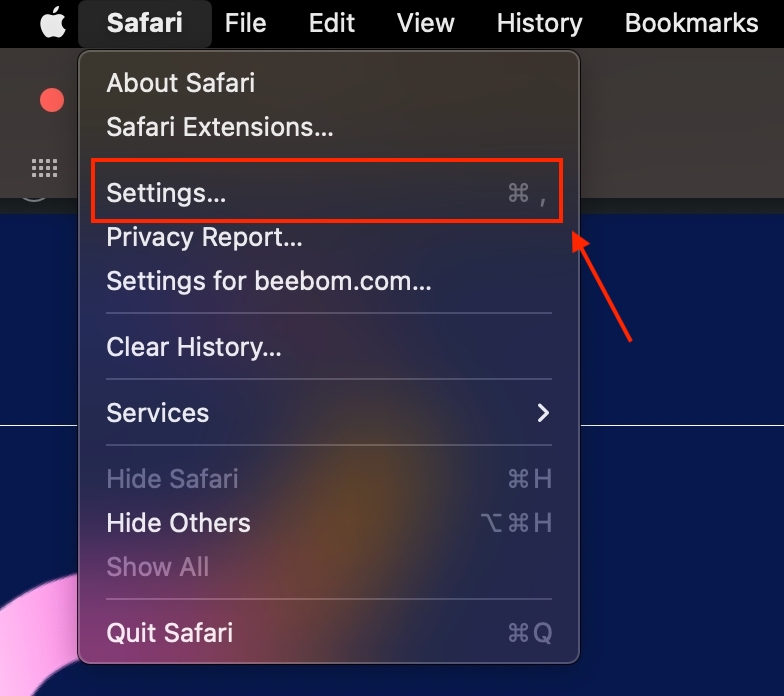- Some websites show videos and important information via pop-ups.
- To allow pop-ups on Mac in Safari, go to Safari Settings> Websites> Pop-up windows> allow.
- To allow pop-ups on Mac in Chrome, go to Site settings> Privacy and security> Pop-ups and redirects and allow all pop-ups.
Most modern browsers block pop-ups on Mac by default. This is done to protect you from unwanted ads, distractions, potential scams, and other phishing tactics. That said, not all pop-ups are distracting or harmful. Some websites like banks and retail sites require you to allow pop-ups on Mac. For example, a retail website might show you a tempting deal or offer a special discounted price in a pop-up. In such cases, you should know how to allow pop-ups on Mac. In this article, we’ll show you how to disable pop-up blockers in Safari and Chrome on Mac. Let’s begin.
How to Allow Pop-ups on Mac in Safari
When using Safari or any other web browser, you can block or allow Mac pop-ups for individual or all websites. Also, you can choose to block pop-ups on a website and be notified when the website wants to display a pop-up. Then, you can decide if you wish to see that pop-up or not. Here’s how to unblock pop-ups on Mac in Safari:
Allow pop-ups in Safari for one website
- When you’re in Safari with a website opened, go to the top Menu Bar, click on Safari, and choose Settings.

- From the top, visit the Websites section.
- Now, choose Pop-up Windows from the left sidebar.
- Here, you’ll see the URLs of the currently opened websites.
- For the websites you wish to allow pop-ups on your Mac, click on the drop-down next to it, and choose Allow.
- In case you wish to be notified every time a website is trying to display a pop-up, choose Block and Notify.
Allow pop-ups in Safari for all websites
- Open Safari and then click on Safari from the top Menu bar.
- Choose Settings from the list of options.

- From the top, go to the Websites section and click on Pop-up Windows from the left sidebar.
- From the drop-down menu next to “When visiting other websites“, select Allow.
Note: Unless you’re confident that pop-ups are legitimate ads or notifications from trusted websites, avoid interacting with them. Stay away from websites and pop-ups that seem to take over your screen.
How to Allow Pop-ups on Mac in Chrome
Allowing pop-ups in Chrome on Mac is as easy as doing it in Safari. If you would like to allow pop-ups on Mac when using Chrome, you can do it by accessing the Site Settings menu. Just like Safari or any other web browser, Chrome lets you choose the default settings for individual or all websites. Here’s how to unblock pop-ups on Mac in Chrome.
Allow pop-ups in Chrome for one website
- Open Chrome on your Mac and go to the website for which you wish to allow pop-ups.
- Now, click on the “view site information” icon present to the left of the website name.
- Here, click on Site settings. You’ll find the “Pop-ups and redirects” option under the Privacy and security section.
- From the drop-drop menu, click on Allow.
- Doing this will allow pop-ups on Mac when you use this specific website in Chrome.
Allow pop-ups in Chrome for all websites
- Open Chrome on your Mac.
- Visit Google Chrome settings by tapping on the three-dot button at the end of the URL bar.
- Now, select the Privacy and security option from the left sidebar.
- Next, click on Site Settings from the right side side and scroll down to the bottom.
- Click on Pop-ups and redirects.
- If you wish to allow all pop-ups on your Mac, make sure to select “Sites can send pop-ups and use redirects”.
That’s how you can turn off the pop-up blocker on Mac and allow pop-ups. No matter whether you’re using Safari or Chrome, it takes a few minutes to allow pop-ups.